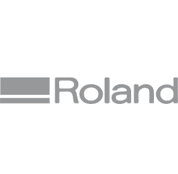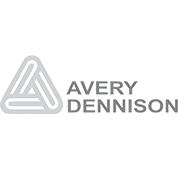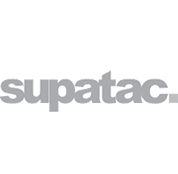The Differences of Warning, Mandatory & Prohibition Safety Signs
Signpro Graffix • July 8, 2025
Safety is a shared responsibility in any workplace, and safety signs play a crucial role in keeping everyone informed and protected. Whether you’re overseeing a busy construction site, managing a warehouse, or operating a factory, the right signage can help reduce the risk of accidents, enforce mandatory behaviours and remind workers of key safety procedures.
Understanding the distinctions between warning, mandatory, and prohibition signs is essential for any workplace health and safety officer or facility manager. Here’s a breakdown of how these signs work and why getting them professionally designed and installed makes all the difference.
What Are Safety Signs & Why Do They Matter?
Safety signs serve a functional purpose—communicating vital safety information visually. They warn of hazards, instruct on necessary actions, and restrict unsafe behaviour. Under Australian WHS legislation and AS 1319 standards, workplaces must display appropriate signs to alert people to risks and maintain safety protocols.
Custom safety signs help businesses meet compliance requirements while ensuring the messages are clear and relevant to their environment.
Key reasons safety signs matter:
- Help prevent injuries and accidents by providing clear warnings
- Serve as a reminder of workplace safety protocols
- Aid in quick decision-making during emergencies
- Ensure compliance with WHS obligations and minimise legal risks
- Reinforce training and site-specific safety instructions
Recognising Warning Signs: Symbols That Signal Danger
Warning signs are designed to alert staff and visitors to potential hazards that aren’t immediately obvious. They are typically yellow with a black triangle and icon. They don’t ban behaviour or instruct action—they simply provide advance notice of a risk so appropriate caution can be exercised.
For custom signage in Wagga Wagga, adapting these signs to reflect your specific site conditions makes them more effective and relatable.
Common examples of warning signs include:
- “Forklifts Operating” to alert pedestrians of moving machinery
- “Slippery When Wet” near wash bays or entryways
- “High Voltage” around electrical cabinets or switchboards
- “Hazardous Chemicals” in storage rooms or laboratories
- “Uneven Surface” near construction zones or temporary walkways
The Role of Mandatory Signs in Enforcing Safe Behaviour
Mandatory signs instruct individuals to take specific safety actions. These signs have a blue circle with a white pictogram symbolising the required action. Under Australian regulations, failure to comply with these signs may result in disciplinary or legal consequences.
Customised mandatory signs help remove ambiguity by aligning the message with your operations and workforce expectations in facilities where compliance is critical.
Examples of mandatory safety signage:
- “Hearing Protection Must Be Worn” in noisy mechanical areas
- “Hard Hats Must Be Worn” on construction sites
- “Wash Hands Before Returning to Work” in food prep or lab environments
- “Foot Protection Required” in industrial or warehousing zones
- “Wear a Respirator” in areas with dust or chemical exposure
Prohibition Signs: Preventing Unsafe Actions Before They Occur
Prohibition signs tell people what they must not do. They are instantly recognisable by their red circle and diagonal line over a black icon. They’re essential for restricting behaviours that could result in injury, property damage, or breaches of safety procedures.
When created as part of a custom safety sign solution, these signs can be tailored to reflect specific risks in your location, making them more meaningful and effective.
Examples of common prohibition signs:
- “No Entry – Authorised Personnel Only” at restricted access zones
- “No Smoking” near flammable materials or fuel storage
- “Do Not Operate Without Guards in Place” on machinery
- “No Mobile Phones” in environments with electronic interference
- “Do Not Use Ladder – Under Maintenance”
Why Customisation Improves Safety and Communication
Custom safety signs are essential in environments where standard messages don’t fully capture the risks or responsibilities. A generic “Caution” may not be sufficient if the danger is specific to a process, material, or local rule. Customisation ensures your signs speak directly to the people who rely on them.
Benefits of using custom safety signs:
- Improved clarity through site-specific language and imagery
- Greater engagement from staff due to relevance and familiarity
- Enhanced visibility through appropriate sizing and positioning
- Alignment with workplace-specific WHS procedures or training
- Multi-lingual signage to accommodate diverse teams
Legal Compliance: Ensuring Your Signs Meet WHS Regulations
It’s not just about best practice—it’s the law. Australian workplaces are required to comply with AS 1319 guidelines for safety signage. Failing to meet these standards can result in regulatory penalties, legal exposure, and a higher likelihood of workplace injuries. Professionally produced signs provide peace of mind by ensuring compliance and helping you stay prepared for audits.
Key requirements for compliant safety signage include:
- Use of appropriate colours and geometric shapes for each type of sign
- Placement at eye-level or other strategic locations to maximise visibility
- Selection of durable materials suitable for both indoor and outdoor environments
- Clear, standardised text and symbols that align with workplace safety codes
- Sizing that ensures the sign can be easily read from a relevant distance
Common Mistakes Businesses Make with Safety Signage
Even with good intentions, poorly planned signage can undermine your WHS efforts. Sign placement, messaging or maintenance mistakes can lead to confusion or, worse, incidents.
Avoidable mistakes to watch for:
- Using incorrect sign types (e.g. a warning sign where a mandatory one is needed)
- Placing signs too high, too low, or out of direct line of sight
- Faded or damaged signs that no longer meet compliance
- Overcrowded areas with too many conflicting messages
- Relying on temporary handwritten signs indefinitely
Choosing a Professional for Your Safety Sign Needs
Safety signage is not just a tick-box exercise—it’s a visual cornerstone of your health and safety system. Working with a professional provider ensures your signs are made to standard, fit for purpose, and can be customised to suit your exact site.
A signage expert can help with:
- On-site consultation to assess risks and signage needs
- Custom design that integrates text, graphics and branding
- Fabrication using high-quality materials for durability
- Installation in accordance with WHS requirements
- Ongoing updates to reflect site or regulation changes
Ready to Upgrade Your Workplace Safety?
At Signpro Graffix, we design and manufacture custom safety signs in Wagga Wagga that align with your workplace’s unique needs. Whether it’s warning, mandatory or prohibition signage, we ensure each sign is WHS-compliant, highly visible, and tailored to your operations.
Give us a call or get in touch via our contact page to organise a site assessment or to discuss your custom signage requirements. Let’s work together to create a safer workplace across the Riverina.














